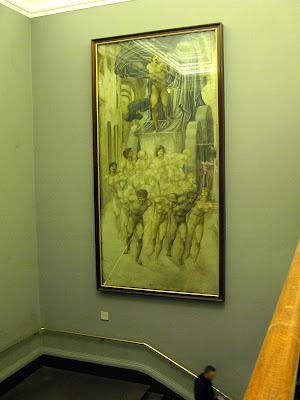The month of December is about birthdays and xmas in my house - and cooking! We did the annual gingerbread cookies earlier in the month (I posted the recipe last December), made birthday cake for my husband shortly after and decorated the tree last weekend. My last ceramics workshop of the year took place last Thursday, and my husband & I were gifted with this beautiful wreath by a fellow workshopper who has also been taking a flower arranging course!
I have plans to make my annual butter tarts in the next few days. The filling recipe is courtesy of my Newfie sister-in-law, and I only started making the tarts when she moved back to Canada about ten years ago. [Prior to that, the butter tarts were her annual "Canadian" xmas treat!]
Use your favourite pastry recipe for a dozen tarts. I use an easy one from DK's The Ultimate Cooking Book by Jane Bull: 1) Rub 125g/4 oz butter into 250g/8 oz plain flour 2) Add 4-8 tsp water to flour-butter mix 3) Squeeze into a dough ball, roll out, and cut with a pastry cutter or the floured top of a glass (that's what I use!).
For the filling: 1) Cream together 50g/2 oz softened butter and 120g/4.5 oz brown sugar 2) Beat in 1 egg, 1/2 tblsp lemon juice and 40g/1.5 oz currants or raisins. 3) Add mix to pastry shells (in greased tart tin) and 4) Bake at 190C in preheated oven for about 15 mins (edges of pastry are delicately browned).
Yum! Happy Christmas and a safe, healthy and wondrous 2018!


















































